Text written in Basque and translated automatically by Elia without any subsequent editing. SEE ORIGINAL
The exploration of Mars was a matter of two
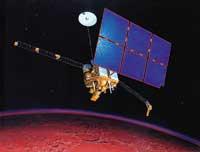
Mars Observer.
ANDÉN
Until the issues of cooperation have been imposed, overcoming the distance between Mars and Earth has been the goal of the individual efforts of the United States and the Soviet Union. The adventure itself began in 1960 with the Soviets sending spacecraft, called Mars Probe, but the first to enter the orbit of Mars was the Mariner 4 of the United States. Since then several attempts have been made to reach Mars, many incorrect, and some of them have gone well. The highlights are:
- Mariner 4 probe: The United States launched into space on November 28, 1964 and reached the orbit of Mars on July 14, 1965, 9,920 kilometers from the surface of Mars. In addition to showing a planet full of craters, it confirmed the existence of an atmosphere mostly of carbon dioxide and detected a small magnetic field on the red planet.
- Mariner 6 and Mariner 7 probes: February and March 1969. They were sent to the Martian equator and to the south pole. Both passed about 3,500 kilometers from the surface of Mars.
- Mars 3 probe: On May 28, 1971 he left the Earth and on December 2 of the same year reached Mars. Therefore, the honor of the first arrival of something sent by man to the red planet corresponds to the Soviet Union. As soon as landing on Mars began to send television images, but at 20 seconds the broadcast was interrupted. However, data on temperatures could be collected.
- Mariner 9 probe: It was sent to Mars on May 30, 1971 and put into orbit on November 24. This American expedition obtained many photographs, both of Mars and the satellites of Phobos and Demos Mars.
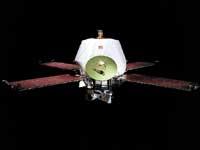 Mariner 9.ANDÉN
Mariner 9.ANDÉN - Mars 4, Mars 5 and Mars 6 probes: They were launched by the Soviets to Mars in 1973. They got to the orbit, but then they got lost.
- Viking 1 and Viking 2 probes: They were sent by NASA to Mars in 1975 and arrived on the red planet in June and July of the following year. In addition to sending a large number of images to Earth, Martian soil studies were done to see if there was life or not, looking for microorganisms and water. Two probes remained in orbit and two others stepped on the ground of Mars, one in the plain called Utopia and one in the west of Mars. In the early eighties communication was interrupted by probes on Mars.
- Phobos 1 and Fobos 2: They were sent by the Soviets in 1988 to Phobos, but were not, for various reasons, beyond the Martian orbit. With the first probe everything went well until problems with the software arose; with the second, everything went perfectly, but on March 27, 1989, about 50 meters from the satellite, ready to release the entire vehicle, the contact was lost.
- Mars Observer probe: Sent to Mars on September 25, 1992. When on August 21, 1993, the communication was to enter orbit, it was lost. The loss of the Mars Observer probe meant a change of style in the space adventure. This expedition was enormous, it was planned to carry out numerous experiments, a lot of sensors in the probe, multicamera cameras to capture images, the most advanced instruments, etc. But everything was lost. The failure caused a change of philosophy, the subsequent missions were not so great, the objectives were more concrete, so the expeditions would be cheaper and at the same time faster. The new era came to the conquest of space.
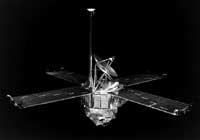 Mariner 6.ANDÉN
Mariner 6.ANDÉN
Mars in figures
- Equatorial diameter 6,794 km (0,533 times that of the Earth)
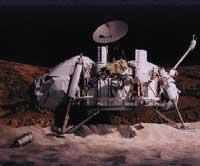 Viking.ANDÉN
Viking.ANDÉN - Mass (relative to the mass of the Earth) 0.107
- Average density 3.93 g/cm3
- Acceleration of gravity Ecuador 0.38 times Terrestrial
- Rotation period 24 hours, 37 minutes, 23 seconds
- Orbital period 686.98 days
- Inclination of the equator to orbit 24º
- Orbit eccentricity 0.093
- Average distance to the Sun 227.940.000 km
- Maximum distance to the Sun 249.000.000 km
- Minimum distance to the Sun 207.000.000 km
- Maximum distance to Earth 400.000.000 km
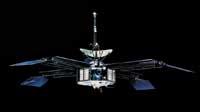 Mariner 4.ANDÉN
Mariner 4.ANDÉN - Minimum distance to land 56.000.000 km
- Minimum surface temperature -140°C
- Higher surface temperature 20ºC
- Average surface temperature 63°C
Buletina
Bidali zure helbide elektronikoa eta jaso asteroko buletina zure sarrera-ontzian











